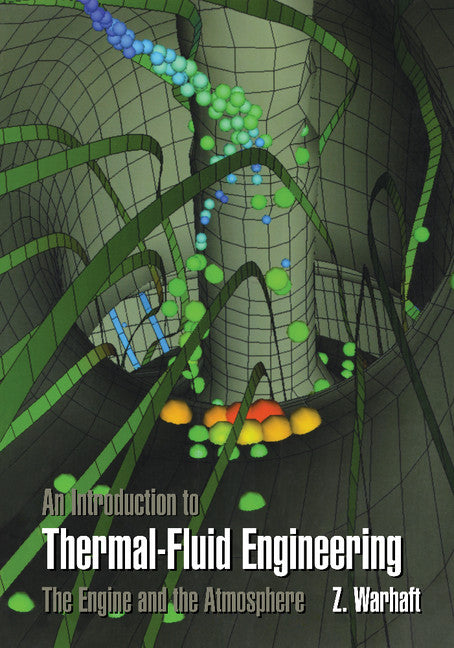Freshly Printed - allow 8 days lead
Couldn't load pickup availability
An Introduction to Thermal-Fluid Engineering
The Engine and the Atmosphere
This book is an introduction to thermodynamics, fluid mechanics, heat transfer, and combustion for beginning engineering students.
Zellman Warhaft (Author)
9780521589277, Cambridge University Press
Paperback, published 13 January 1998
268 pages, 158 b/w illus.
25.4 x 17.8 x 1.4 cm, 0.47 kg
'This book is aimed at students who are starting courses in engineering. At the outset, the author states that his approach is somewhat novel, with an emphasis on the social implications of engineering. This is one of the great strengths of this book, which should have considerable appeal to a wide audience. The style throughout the book is clear and readable, and the book provides a very accessible introduction to a number of areas in engineering and physical science … The problems included are based mainly on real situations, and answers for each are given; many are sufficiently general as to be useful in provoking further discussion.' Paul C. Yates, Chemistry in Britain
Increasingly, engineering education is responding to concerns about how engineering practice affects the environment. This text provides an integrated introduction to basic engineering topics and the social implications of engineering practice. Aimed at beginning engineering students, the book presents the basic ideas of thermodynamics, fluid mechanics, heat transfer, and combustion through a real-world engineering situation: it relates the engine to the atmosphere in which it moves and exhausts its waste products. In addition to the traditional thermal-fluid topics, the book includes a chapter on the atmosphere, with a particular focus on the greenhouse effect and atmospheric inversions. The social implications of engineering in a crowded world with increasing energy demands are also addressed. This approach will capture the reader's attention and set the stage for subjects that will be studied later in their degree in greater depth. Students in mechanical, civil, agricultural, environmental, aerospace, and chemical engineering, as well as the physical sciences, will welcome this engaging, well illustrated introduction to thermal-fluid engineering.
1. Introduction
2. Thermodynamics
3. Fluid dynamics
4. Heat transfer
5. The atmosphere
6. Energy sources
7. The engine, the atmosphere, and the engineer.
Subject Areas: Mechanical engineering [TGB]


